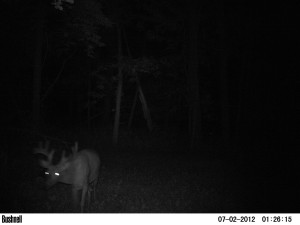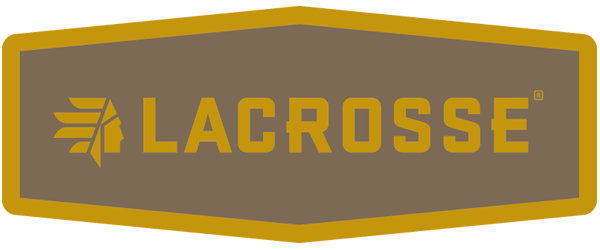 I have had my trail cams out since the last day for turkey season; I know I’m a little overboard but with the cams on the market today why not. Most good ones run on a set of batteries for 9 months to a year, if the settings are right. So far this year I have a few good pictures of turkeys and one good looking buck for July that is, we will watch and see if he makes the “hit list”. Speaking of the “hit list” if you need some help with naming bucks on your list check out TrailCamTrophies.com Matt and Jen got this down…
I have had my trail cams out since the last day for turkey season; I know I’m a little overboard but with the cams on the market today why not. Most good ones run on a set of batteries for 9 months to a year, if the settings are right. So far this year I have a few good pictures of turkeys and one good looking buck for July that is, we will watch and see if he makes the “hit list”. Speaking of the “hit list” if you need some help with naming bucks on your list check out TrailCamTrophies.com Matt and Jen got this down…
The digital trail camera has given hunters one of the best scouting tools ever, but most of us fall short of using their camera to its full potential. I know when I first started using them I was missing bucks, even had to make an adjustment with the cam that took the picture to the left,taken a few days ago. I moved it down the tree and a little more to the left, next time I pull the card we will see if I have a better view of this buck. The trail cam can be a great tool for seeing what’s out there, but like any tool, it must be used properly for the user to get the full benefit of using the “hunter that doesn’t sleep.”
A trail cam will let you see many of the bucks you have/may have available for harvest in the area where you hunt. Most of the bucks you probably would have never seen otherwise. One of most common practice employed by game camera users is to set a camera adjacent to their feeder or food plot. This works if you plan to hunt over that food plot within a few days but if it’s July, and you are months away from hunting, then you have to look at moving cams as a deer pattern changes. Late summer patterns differ from an early fall pattern which differs from a pre-rut pattern, you will want to make those changes as well.
Be very specific when placing out your trail cameras. If there are deer trails between areas of good bedding cover and food sources, these are places you definitely want to investigate. As Thomas Allen said in one of his latest blogs, “The Mid Summer Water Pattern”, setting up on water can work the same as setting up on a food source. Also, patches of woods with thick cover or areas that people/hunters avoid all together should be examined. As hunters we know deer can pattern humans. 














